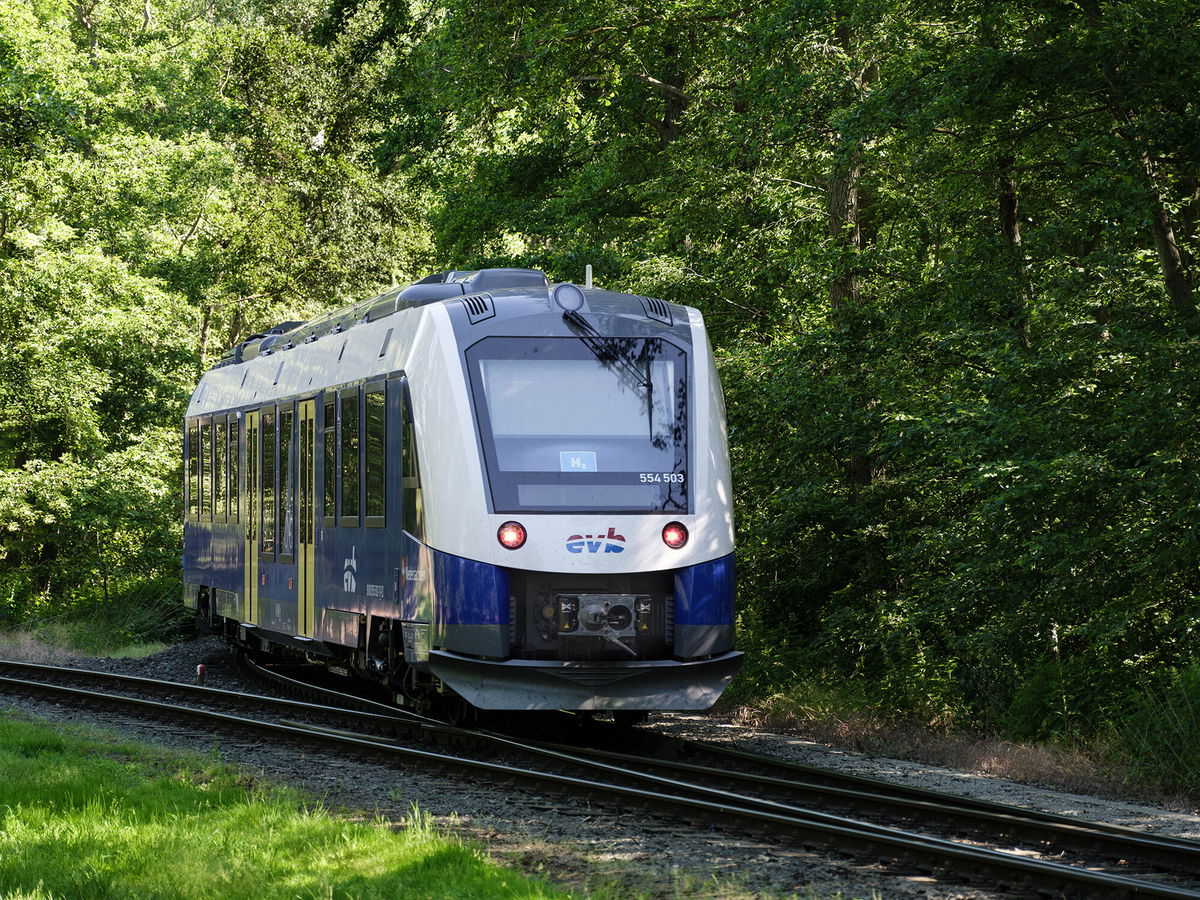The world’s first hydrogen-powered passenger trains are here

The train's exhaust emits only steam and condensed water. The fourteen hydrogen trains will exclusively run on the route in Bremervörde
Julia Buckley, CNN
The future of environmentally friendly travel might just be here — and it’s Germany that’s leading the charge, with the first ever rail line to be entirely run on hydrogen-powered trains, starting from Wednesday.
Fourteen hydrogen trains powered by fuel cell propulsion will exclusively run on the route in Bremervörde, Lower Saxony. The 93 million euro ($92.3 million) deal has been struck by state subsidiary Landesnahverkehrsgesellschaft Niedersachsen (LVNG), the owners of the railway, and Alstom, builders of the Coradia iLint trains. The Elbe-Weser Railways and Transport Company (EVB), which will operate the trains, and gas and engineering company Linde, are also part of the project.
The trains, five of which which debut Wednesday, will gradually replace the 15 diesel trains that currently run on the route, with all 14 running exclusively by the end of the year. Just 1 kilo of hydrogen fuel can do the same as around 4.5 kilos of diesel.
The trains are emissions-free and low-noise, with only steam and condensed water issuing from the exhaust. They have a range of 1,000 kilometers (621 miles), meaning they can run for an entire day on the network on a single tank of hydrogen. A hydrogen filling station has already been established on the route. The trains can go at a maximum of 140 kph, or 87mph, though regular speeds on the line are much less, between 80-120 kph.
“Emission free mobility is one of the most important goals for ensuring a sustainable future,” said Henri Poupart-Lafarge, Alstom’s CEO, in a statement.
The deal has been a decade in the making. LVNG had been looking for diesel alternatives since 2012, according to a press release, and in 2018, Alstom ran a two-year trial of the trains. Germany currently has around 4,000 diesel trains on its non-electrified tracks. The Coradia iLint has also been tested in Austria, Poland, Sweden and the Netherlands.
The fueling station, run by Linde, has 64 high pressure storage tanks, six hydrogen compressors and two fuel pumps.
President of Lower Saxony, Stephan Weil, called the news a “model for the rest of the world” and “a milestone on the road to climate neutrality in the transport sector.”
The trains’ next destination will be Frankfurt, where 27 of them have been ordered for the metropolitan area. They will also be making a stop in Italy, where six trains have been commissioned for use in the northern Lombardy region, and in France, where 12 trains will be shared across four regions.
The-CNN-Wire
™ & © 2022 Cable News Network, Inc., a Warner Bros. Discovery Company. All rights reserved.
